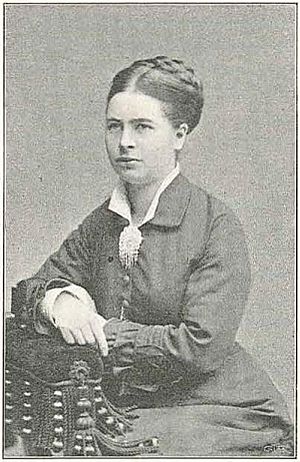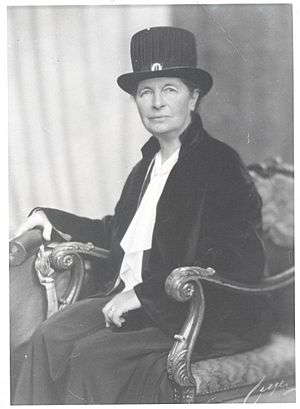Karolina Widerström facts for kids
Karolina Olivia Widerström (born December 10, 1856 – died March 4, 1949) was an important Swedish doctor. She was the first woman in Sweden to become a doctor after going to university. Karolina was also a strong supporter of women's rights and a politician. She worked hard for women to get the right to vote. She led the National Association for Women's Suffrage and was part of the Stockholm city council.
Contents
Karolina Widerström's Life
Karolina Widerström was born in Helsingborg, Sweden. Her father, Otto Fredrik Widerström, was a gymnastics teacher and a veterinarian. Her mother was Olivia Erika Dillén. In 1873, when Karolina was 17, her family moved to Stockholm. As an adult, she lived with Maria Aspman, who was an educator and headmistress.
Her Education Journey
In Sweden, women were officially allowed to attend universities starting in 1870. Karolina's father wanted her to become a gymnastics teacher, just like him. From 1873 to 1875, Karolina studied at the Royal Central Gymnastics Institute. After that, she worked as an assistant to Professor Branting from 1875 to 1877. She also worked as a physiotherapist, helping people with physical injuries.
In 1879, she earned a degree from Wallinska skolan. The next year, in 1880, she got a degree in medical philosophy from Uppsala University. Finally, in May 1884, Karolina Widerström achieved her dream. She received her medical degree from the Karolinska Institutet in Stockholm. This made her the first woman in Sweden to become a fully qualified doctor with a university education.
Medical Career and Women's Health
Karolina Widerström strongly believed that women and girls should learn more about their own bodies. She also wanted them to dress in ways that were healthier and to have the same rights and opportunities as men. She focused much of her work on gynecology, which is the study of women's health.
Her most famous work was a book called Kvinnohygien, which means 'Women's hygiene'. It was first published in 1899. This book was very popular and was printed seven times until 1932. It helped many women understand how to take care of their health.
Working for Change
Karolina was very concerned about women's health. She was a strong supporter of the Swedish Dress Reform Association. This group worked to change how women dressed. Karolina wrote many medical articles speaking out against tight-laced corsets. At that time, wearing very tight corsets was a serious health problem for many women. She helped people understand why healthier clothing was important.
Political Involvement
In 1912, Karolina Widerström was elected to the Stockholm city council. She was a member of the liberal party and served on the council until 1915.
She became the chairwoman of the Swedish Society for Woman Suffrage in 1918. This was just one year before women in Sweden were given the right to vote in 1919. She was the last person to lead this organization. When women finally gained the right to vote, the organization had achieved its goal. Karolina stepped down when the group was closed in 1921. This was after both men and women could vote in the 1921 election.
See also
 In Spanish: Karolina Widerström para niños
In Spanish: Karolina Widerström para niños



